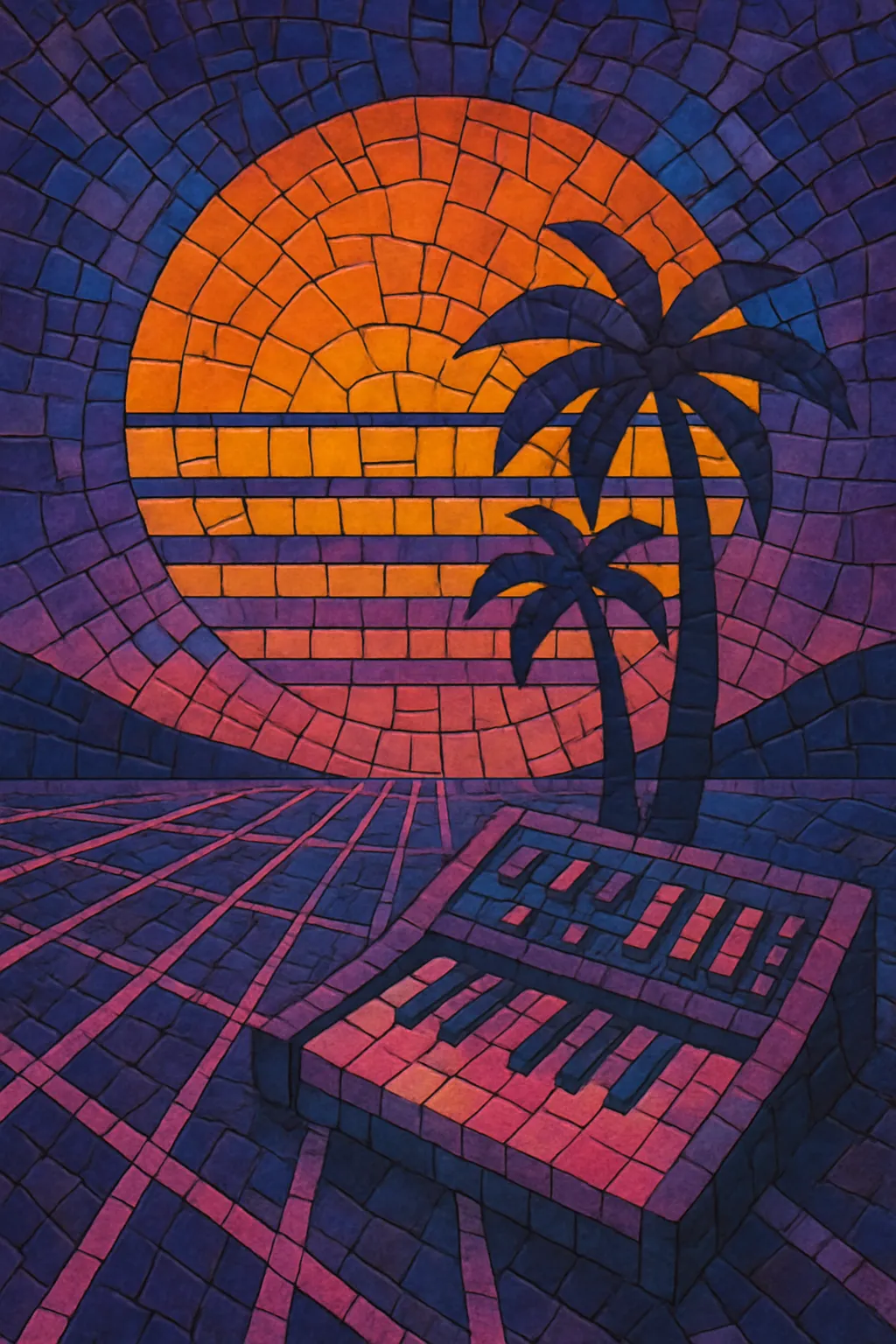Synthwave is a retro-futurist electronic genre that revives and reimagines the sound, texture, and visual culture of 1980s film scores, television themes, arcade games, and synth-pop.
Characterized by analog-style synthesizers, arpeggiated basslines, neon-soaked melodies, and gated-reverb drums, it blends nostalgia with cinematic drama. Substyles include the uplifting, driving "outrun" sound, the softer and romantic "dreamwave/chillsynth," and the heavier, horror-tinged "darksynth." Typical sound palettes reference instruments like the Roland Juno series, Yamaha DX7, Oberheim and Prophet polysynths, with drum machines such as the LinnDrum, TR-707, and 909 (or their modern emulations).
Synthwave emerged in the late 2000s from online communities and indie labels inspired by 1980s cinema and television music. French artists and collectives (e.g., the Valerie Collective with College) helped codify the style’s nostalgic but forward-looking aesthetic, while early releases by Kavinsky and others defined the now-iconic "outrun" sound and imagery.
The genre crossed into wider awareness with the film Drive (2011), which showcased retro-leaning synth music (including College and Kavinsky) and helped cement synthwave’s cinematic association. Video games such as Hotline Miami (2012) amplified its profile, and platforms like the NewRetroWave label/channel (founded in the early 2010s) provided a hub for discovery. Labels like Rosso Corsa and Lazerdisc Records supported a wave of artists across Europe and North America.
As the 2010s progressed, the sound diversified: dreamier, romantic strains (Timecop1983, FM-84, The Midnight) coexisted with darker, more aggressive "darksynth" (Perturbator, Carpenter Brut). Vocal-driven anthems and bandlike stage shows widened synthwave’s appeal, while festivals and club nights (e.g., Outland in the UK) fostered a touring circuit. TV scores (e.g., S U R V I V E members working on Stranger Things) reinforced the connection to 1980s screen music and introduced the sound to broader audiences.
By the 2020s, synthwave had stabilized as a global scene, spawning micro-movements (chillsynth, horror synth, sovietwave) and frequent crossovers with pop, rock, and gaming culture. The core aesthetic—cinematic nostalgia rendered with modern production—remains central, even as artists experiment with hybrid tempos, metal/rock influences, and contemporary EDM techniques.
Use analog or analog-modeled synths for pads, leads, and bass (e.g., Juno-style chorus pads, DX7/FM bells, Oberheim/Prophet brass). Choose drum machines or samples reminiscent of the LinnDrum, TR-707, or 909. Add tape/console saturation, subtle noise, and chorus to evoke vintage depth.
Favor minor modes (Aeolian or Dorian) and emotive progressions such as i–VI–III–VII or i–VII–VI–VII. Employ suspended/add9 chords and warm pads for harmonic beds. Craft hooky, singable lead lines; use portamento, vibrato, and octave jumps for 80s-style expression.
Common tempos range from 80–100 BPM for dreamwave/chillsynth, 100–118 BPM for outrun, and 110–140 BPM for darker or more aggressive tracks. Use steady 4/4 grooves with driving 8th/16th-note bass arpeggios. Layer claps with snares, program tom fills, and use gated reverb on snares for authentic punch.
Program arpeggiated basslines (root–fifth–octave–fifth patterns are classic). Sync arps to 1/8 or 1/16 notes and apply sidechain compression to lock the bass and pads to the kick for a pumping feel.
Structure tracks cinematically: atmospheric intro (pads/FX), theme exposition (bass+lead), breakdown (pads/toms), and a bigger final chorus/lead reprise. Employ risers, reverse cymbals, and filter sweeps. Use sidechain compression, layered leads (mono + harmony), and tasteful stereo widening. Aim for warm, cohesive loudness (avoid over-limiting; let transients breathe).
When using vocals, lean into themes of neon cityscapes, highways at night, romance, longing, and retro-futurist imagery. Keep phrasing clear and melodic; stacked harmonies or vocoder doubles can enhance the 80s flavor.


